Ten years ago there was almost nothing but wine grapes in the Breede Valley, but growing for the wine industry is a difficult business in which, Dreemfruit’s managing director Leonard Droomer quips, “we’ve been practising how to farm without money.”
Whereas the wine industry is difficult, it is not at all risky in the way that stonefruit is, nor is it as lucrative.
“A good block of stonefruit nets three times more than a good block of bulk wine grapes,” he points out. The wine grape crop is never a total flop, you always get your cop in, even if the market is up or down. But with stonefruit you can easily have nothing.”
For instance, during December there were three nectarine cultivars which were not exported because of untimely rain, and instead sent to the local market where prices were down and demand hasn’t been great. For healthy returns, they need to export 80% to 90% of their stonefruit.
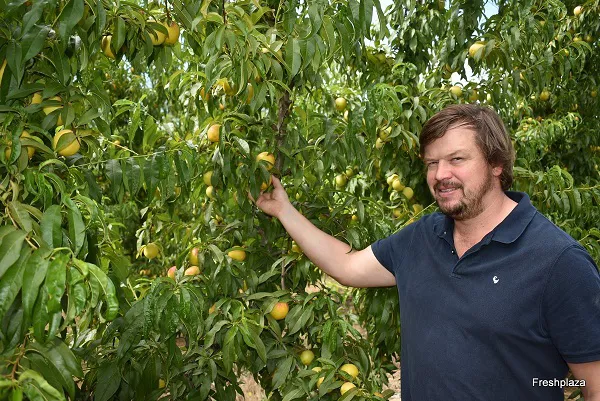 Leonard Droomer of Dreemfruit with a block of yellowskinned nectarines from the Nectagold series
Leonard Droomer of Dreemfruit with a block of yellowskinned nectarines from the Nectagold series
There has been a good fruit set this year, fruit one size smaller and 7 and 10 days early.
“We chose stonefruit because it’s difficult. It feels like there are bigger barriers to entry. We work in hours: I decide on the morning what we’ll be harvesting based on sugars and pressure. With a crop like pears or citrus you can plan ahead for the week. We felt a stonefruit farm can’t become a mega farm planting thousands of hectares of stonefruit like you do with citrus.”
Flat peaches was one of the first things they planted (all of the early cultivars however since taken out and replaced by others) as part of their focus on niche cultivars. The flat nectarines they’re testing has him excited.
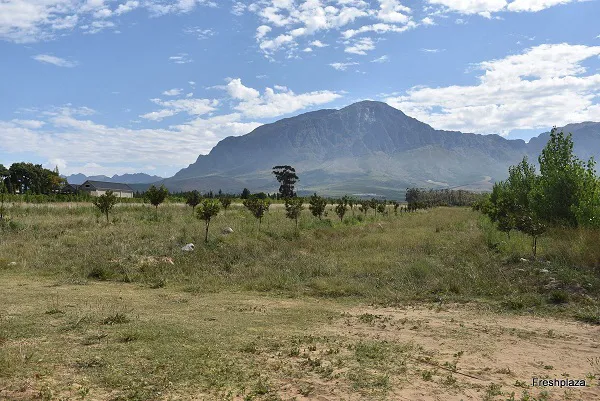 Newly established macadamia test blocks
Newly established macadamia test blocks
Resistance to rain has become a qualifying characteristic
Dreemfruit has around 250 new cultivars from nine different IP owners in their test beds.
He’s of the opinion that in the nectarine space, club cultivars aren’t going to exist in five years. “From week 45 until week 52 there are three good cultivars in each week to choose from and growers are spoiled for choice. Buffat PSB revolutionized the nectarine model when they opened up their cultivars.”
They’re particularly looking for resistance to rain among the new cultivars, seeing that they 80mm right outside of the usual rain season, alternatives to Alpine, for instance. He observes that in their area is also very important to test for Xanthomonas in their area.
“We’re trialling cherries as well, looking for lower chill cherries. Chilling units are our challenge,” he says.
We will be planting Tango and Octobrina in the next season to further diversify our offering. They will be marketed by AMC.
“Our end goal is to have 40ha of nectarines. Locally we’re aligned with PicknPay. We work with Delecta on UK and European supermarket programmes.”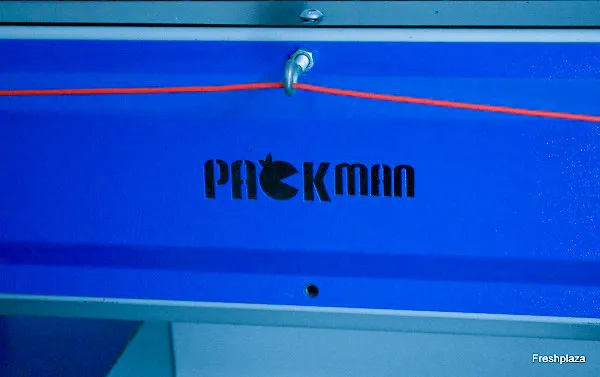 Dreemfruit has invested in a Packman sorting machine
Dreemfruit has invested in a Packman sorting machine
Uncertain future of the canning industry
The uncertain future of the South African canning industry. Langeberg & Ashton cannery which might be taking its last intake of 70,000 tonnes this year, would leave only the Rhodes Foods Group operating in this space in South Africa, apparently profitably.
The closure of South Africa’s second cannery will inevitably affect the fresh stonefruit market. Meanwhile, there has been expansion in stonefruit and the volume increase will create some uncertainty.
The aim is to manage risk by diversifying and increasing the harvest period. We will harvest stone fruit from October to March, wine grapes Feb/March and then have citrus from April to August.
Wine grapes will always remain a part of our portfolio but it will decrease. We did launch our own wine brand (Cape Fold) a year ago,” he says.
Coping with power cuts
This year their big plans are to erect nets over the orchards and to optimize their electricity usage given the context of many hours of power cuts every day and night.
“We use electricity from October to April, and then zero. Strategically, we’ve decided we have to increase our pumping capacity out of the dams. Normally we irrigate for 18 hours to get through our cycle, now we want to be able to get through it in 10 hours so that if we’re on level 6 loadshedding permanently, we’ve got enough hours to work through the farm.”
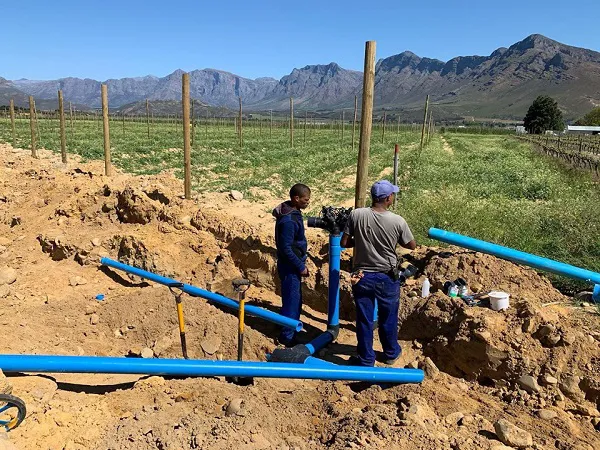 Fewer hours available to irrigate due to South Africa's electricity cuts
Fewer hours available to irrigate due to South Africa's electricity cuts
At the moment they run a generator for their packshed and coldroom, but not for irrigation.
“This year is a season of survival. People are complaining about other things than the weather, which means that there are some fundamental problems. Every year the light at the end of the tunnel gets brighter but the tunnel gets longer,” Leonard says.
“I’m positive of the things that we can manage but it’s the things out of our control – fertiliser prices, input costs, the port – that's really what defines the future. You only used to worry about the weather, now it’s number five on my list of things to worry about.”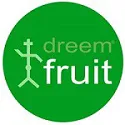 For more information:
For more information:
Leonard Droomer
Dreemfruit
Tel: +27 82 774 6841
Email: [email protected]
